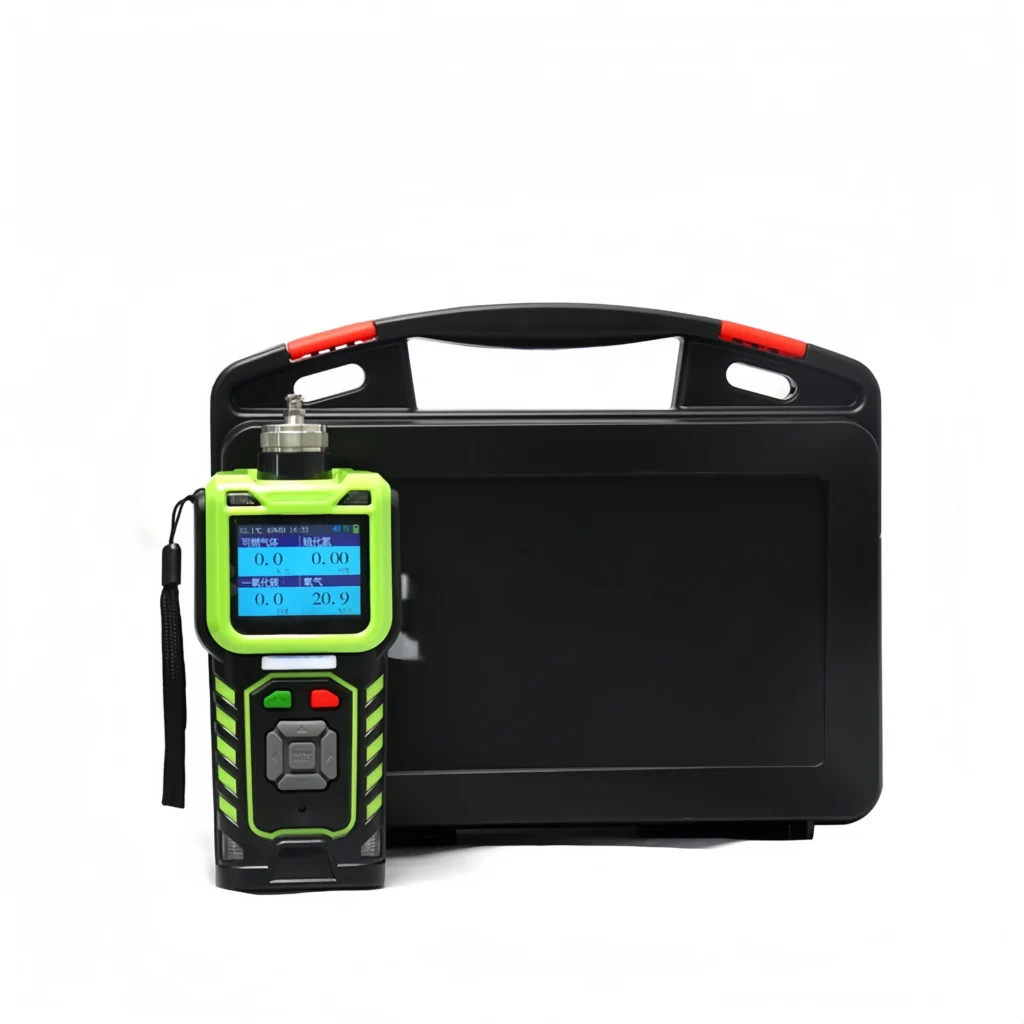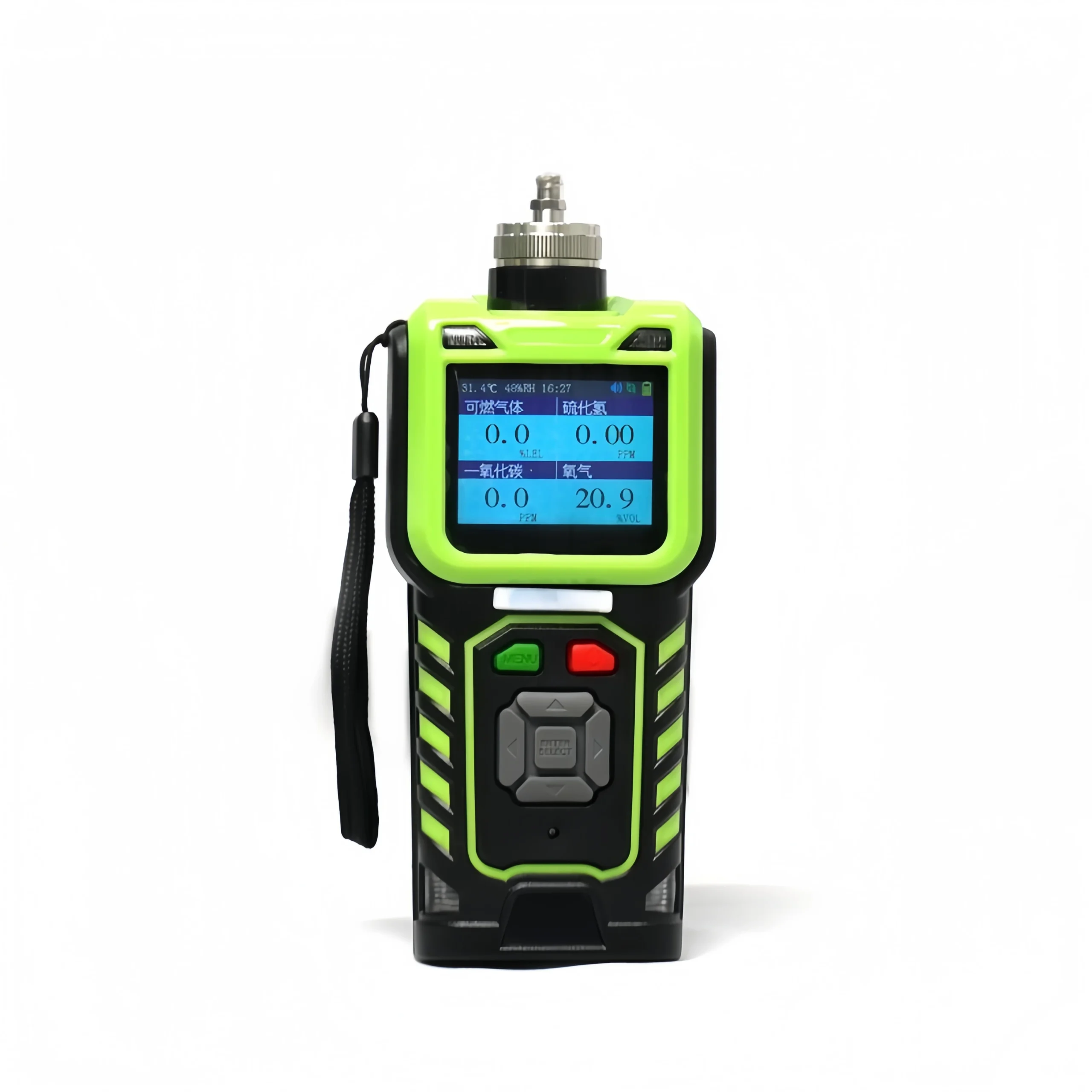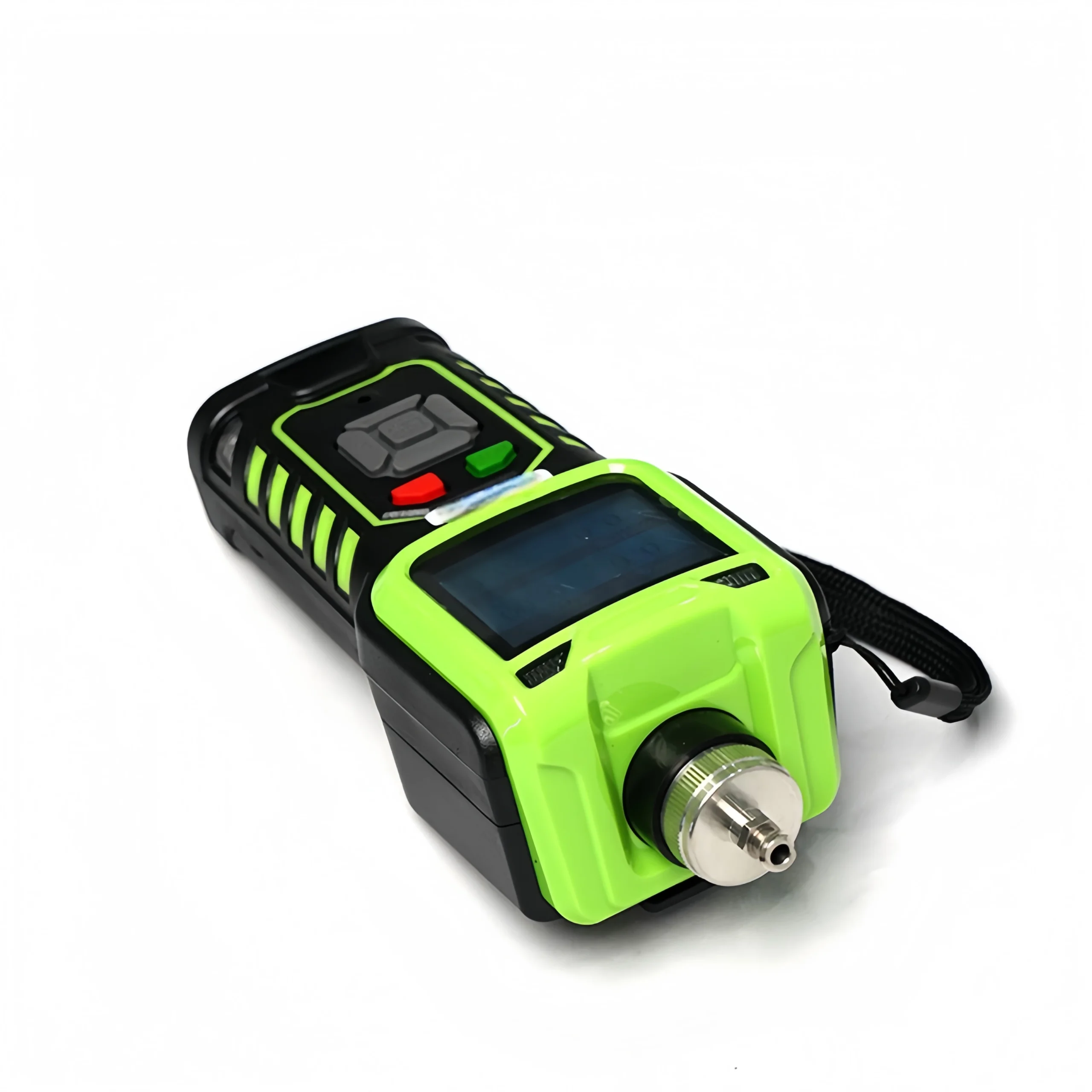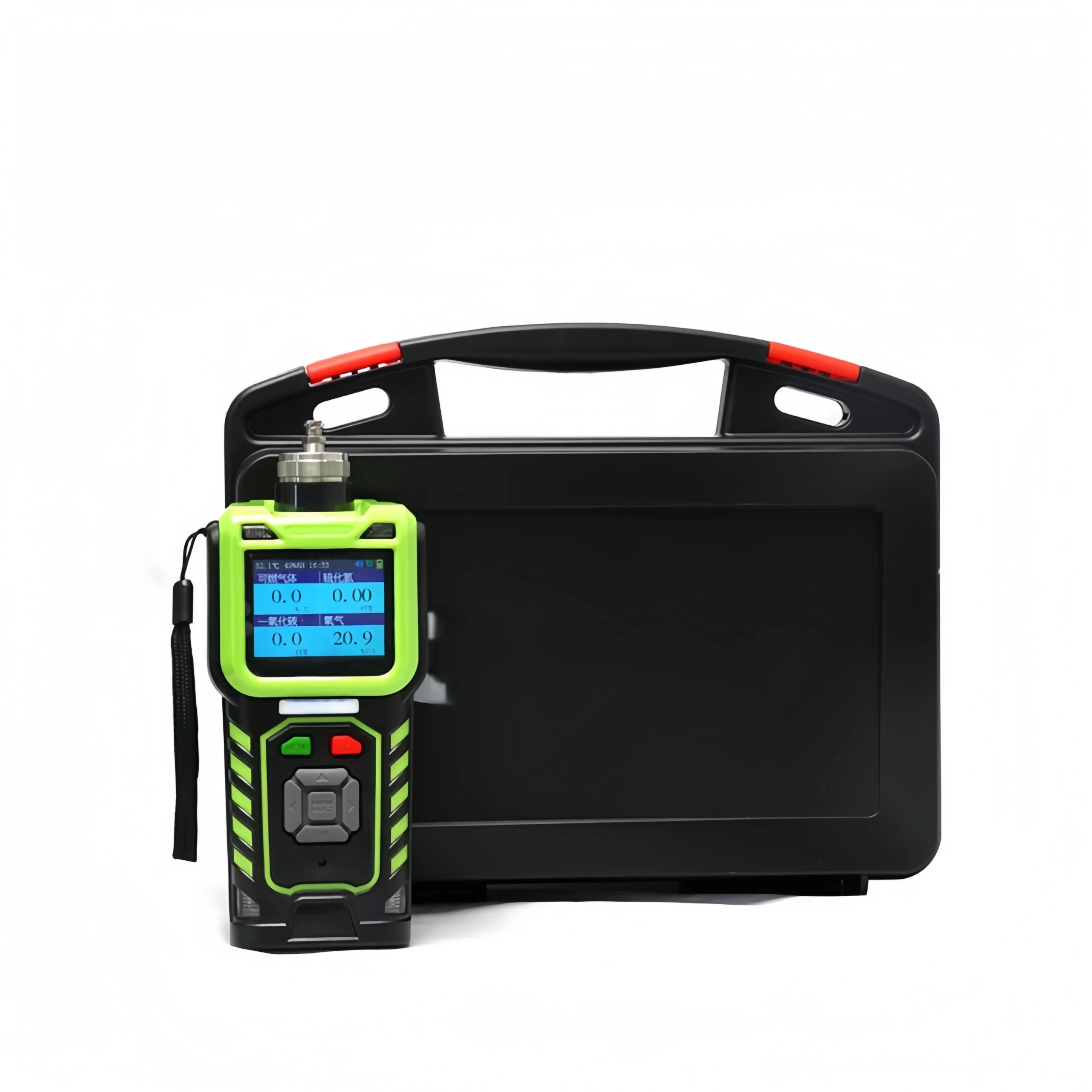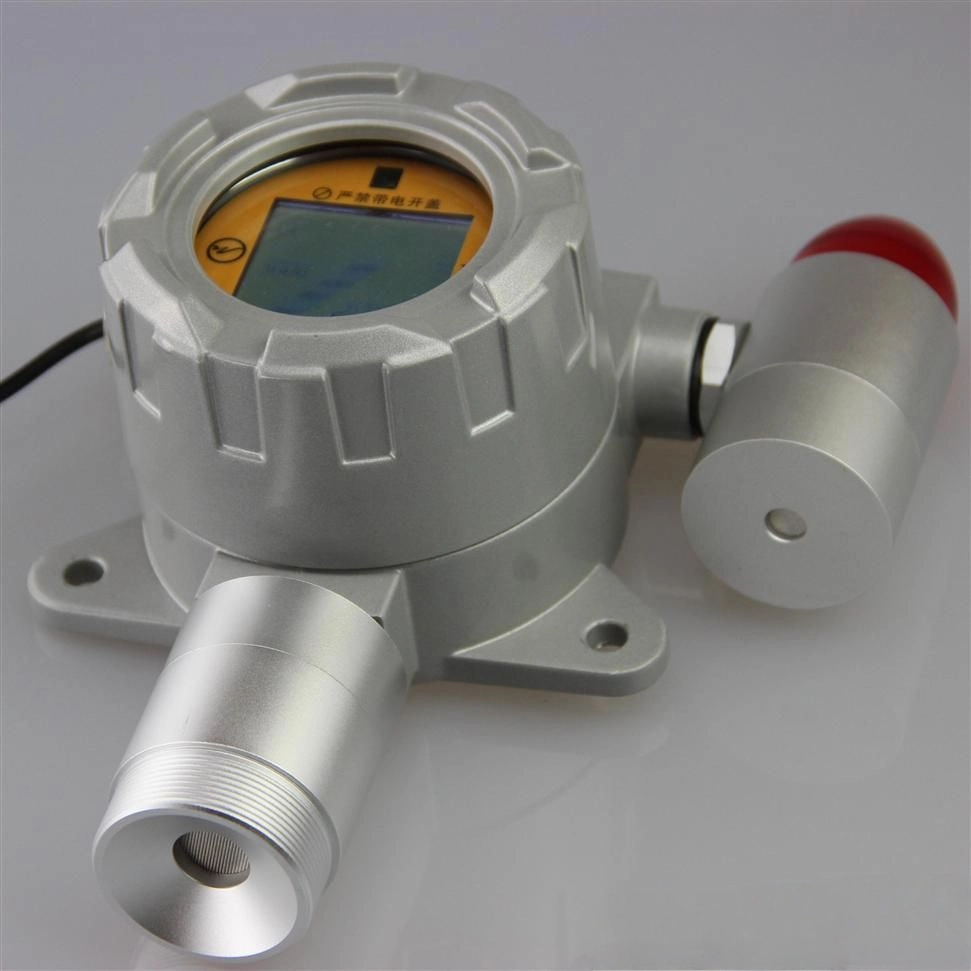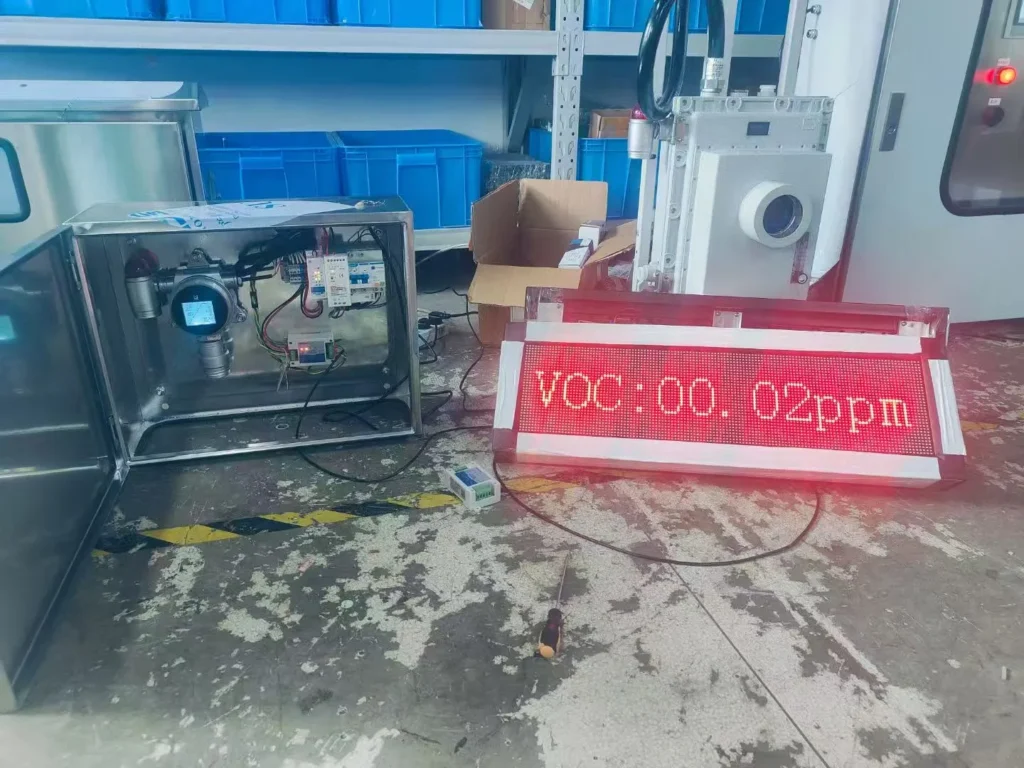The portable Toxic Gas Detector is a gas detection instrument that can simultaneously detect the concentration of any 1 to 6 toxic and harmful gases. It will issue an audible, visual, and vibration alarm when any gas concentration exceeds the standard. Temperature and humidity measurement functions can also be added.
This handheld toxic gas detector is portable and convenient for detecting the concentration or leakage of toxic and harmful gases such as carbon monoxide, vinyl chloride, hydrogen sulfide, chlorine, hydrogen cyanide, acrylonitrile, nitrogen dioxide, benzene, ammonia, carbonyl chloride, phosgene, fluorine, hydrogen fluoride, arsine, bromine, germane, and diborane in the environment.
★★★★★
Features
1. Three display modes freely switchable: simultaneous display of multiple gas concentration values, large-screen display of single gas concentration, or display of single gas concentration changes over a specific time period;
2. Optional high-temperature, telescopic, or non-telescopic gas sampling handles. Extended detection range, suitable for confined space inspections such as equipment pipelines;
3. Operates reliably within -40°C to +70°C ambient temperatures with automatic temperature compensation to eliminate thermal effects on measurements;
4. Supports multiple alarm modes: LOW alarm, HIGH alarm, MAC, PC-STEL, PC-TWA, and other OEL alarm configurations;
5. High-precision gas sensors deliver accurate detection results with minimal deviation. Features rapid leak detection with short warning times and swift response;
6. Features Ex ia IIC T4 Ga intrinsically safe national explosion-proof CNEX certification and IP67 waterproof/dustproof capability, suitable for diverse hazardous and complex operational environments;
7. Features a 6000 mA high-capacity rechargeable battery, enabling the portable toxic gas detector to fully meet continuous gas monitoring requirements throughout an entire workday;
8. Optional wireless data transmission functionality supports multiple protocols including Wi-Fi, ZigBee, Bluetooth, GPRS, RoLa, and 443M.
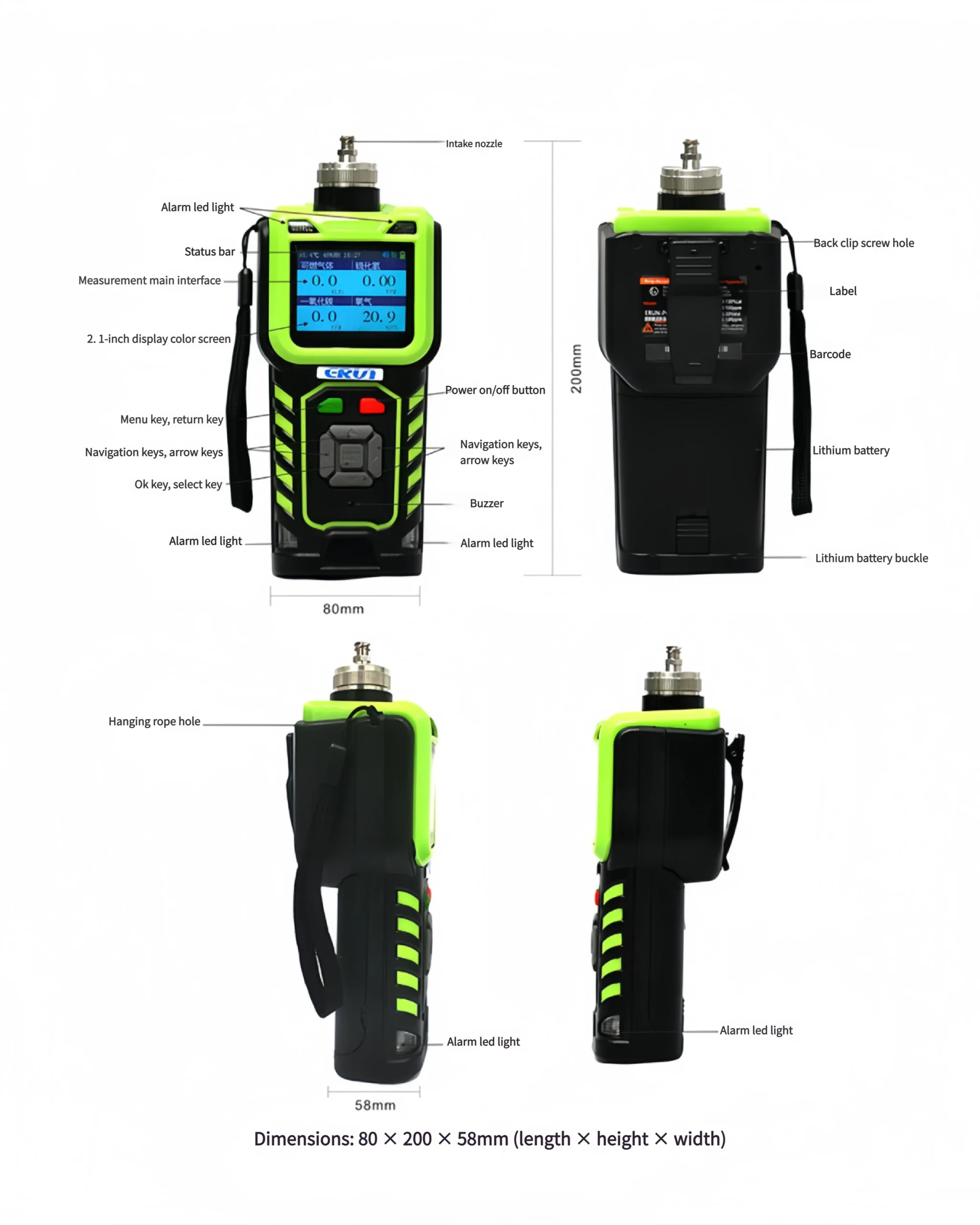
Specifications
| Detected Gases | Any 1-6 toxic and harmful gases (hydrogen sulfide H2S, carbon monoxide CO, nitrogen dioxide NO2, formaldehyde CH2O, chlorine Cl2, hydrogen peroxide H2O2, methanol CH4O, sulfur dioxide SO2, ammonia NH3, hydrogen fluoride HF, volatile organic compounds VOCs, and combustible gases Ex) Optional: Detects optional temperature, wind direction, noise, wind speed, humidity, atmospheric pressure, PM2.5, PM10, etc. |
| Range and resolution | H2S: 0-100ppm, 0.01ppm, high-performance electrochemicals |
| CO: 0-500ppm, 0.1ppm, high-performance electrochemicals | |
| NO2: 0-100ppm, 0.01ppm, high-performance electrochemicals | |
| CH2O: 0-20ppm, 0.01ppm, high-performance electrochemicals | |
| CL2: 0-20ppm, 0.01ppm, high-performance electrochemicals | |
| H2O2: 0-50ppm, 0.01ppm, high-performance electrochemicals | |
| CH4O: 0-100ppm m: 0.01ppm, high-performance electrochemical | |
| SO2: 0-100ppm, 0.01ppm, high-performance electrochemical | |
| NH3: 0-100ppm, 0.01ppm, high-performance electrochemical | |
| HF: 0-10ppm, 0.001ppm, high-precision electrochemical | |
| VOC: 0-100ppm, 0.01ppm, high-precision PID photoionization | |
| Ex.: 0-100%LEL, 0.1%LEL, industrial-grade catalytic combustion | |
| Other gases, ranges, principles, and resolutions can be customized. | |
| Detection Method | Built-in pump suction, flow rate 500 ml/min |
| Display Method | 2.5-inch 320*240 high-definition color screen display |
| Detection Accuracy | ≤±2%F.S (higher precision can be customized) |
| Alarm Method | Sound + flash + vibration + screen alarm, alarm off optional |
| Response Time | T90≤20 seconds |
| Operating Power Supply | 3.7VDC, 6000mA high-capacity polymer rechargeable battery |
| Data Storage | Standard 100,000 data entries capacity, larger capacity can be customized |
| Communication Interface | USB (charging and communication), RS232, infrared communication, automatic identification |
| Protection Functions | IP67 waterproof and dustproof rating |
| Explosion-proof Functions | Intrinsically safe, Ex ia ⅡC T4 Ga explosion-proof rating |
| Dimensions | 195×77×46mm (L×W×H) |
| Product Weight | 500g |
Product Configuration
| Standard Accessories | USB charger (with data cable), pump-suction toxic gas detector, instruction manual, humidity and dust filter, certificate of conformity, premium aluminum alloy instrument case. |
| Optional Accessories | Lanyard, multiple humidity/dust filters, high-temperature/high-humidity pretreatment system, 1.2 m extendable sampling handle (1-10 m hose, standard length 1 m), high-temperature sampling cooling filter handle, CD (host computer communication software), external miniature wireless infrared printer, temperature/humidity measurement function. |
| Temperature Measurement (Optional) | -40°C to +120°C, accuracy 0.5°C. |
| Humidity Measurement (Optional) | 0-100%RH, accuracy 3%RH. |
| Wireless Transmission (Optional) | Bluetooth, 443MHz, ZigBee, GPRS, WiFi, RoLa, etc. |
Common Toxic Gases:
| No. | Name | No. | Name | No. | Name |
| 1 | Carbon monoxide | 2 | Vinyl chloride | 3 | Hydrogen sulfide |
| 4 | Chlorine | 5 | Hydrogen cyanide | 6 | Acrolein |
| 7 | Nitrogen dioxide | 8 | Benzene gas | 9 | Ammonia |
| 10 | Carbonyl chloride | 11 | Phosgene | 12 | Fluorine |
| 13 | Hydrogen fluoride | 14 | Arsenic hydrogen | 15 | Bromine |
| 16 | Hydrogen bromide | 17 | Germanane | 18 | Boron trifluoride |
| 19 | Aniline | 20 | Pyridine | 21 | Acetone |
| 22 | Iodine gas | 23 | Methyl bromide | 24 | Thionyl chloride |
| 25 | Ethylene oxide | 26 | Phosphine | 27 | Hydrazine |
| 28 | Sulfur hexafluoride | 29 | Dichloroethylene | 30 | Sulfur dioxide |
Note: For other unlisted toxic and harmful gases, please consult us.
Toxic Gas Detector Working Principle
The principles behind toxic gas detection are diverse, primarily including electrochemical principles, photoionization detection (PID), and catalytic combustion. Among these, electrochemical sensors are the most widely used.
Electrochemical sensors utilize electrochemical reactions to detect the concentration of toxic gases. When a gas reacts with an electrolyte in the sensor, it generates a change in current or potential. By measuring these changes, the gas concentration can be determined. Electrochemical sensors offer advantages such as high sensitivity, fast response, and good selectivity, and are commonly used to detect: carbon monoxide (CO), hydrogen sulfide (H₂S), sulfur dioxide (SO₂), nitric oxide (NO), nitrogen dioxide (NO₂), ammonia (NH₃), chlorine (Cl₂), hydrogen cyanide (HCN), and hydrogen chloride (HCl), among others.
Pay attention to the concentration measurement range of the detection instrument.
Various toxic and harmful gas detectors have their fixed detection ranges. Only by completing measurements within this range can the instrument guarantee accurate readings. Prolonged measurements outside the detection range may cause permanent damage to the sensor.
For example, an LEL detector, if accidentally used in an environment exceeding 100% LEL, may completely burn out the sensor. Similarly, toxic gas detectors will be damaged if used at high concentrations for extended periods. Therefore, if the instrument issues an over-limit signal, the measurement circuit should be immediately shut down to ensure sensor safety.
Diffusion vs. Pump-Suction
When choosing a toxic gas detector, you will encounter the choice between diffusion and pump-suction types.
Diffusion gas detectors detect the concentration of toxic and harmful gases in the environment through gas diffusion. When the detected concentration is too high or too low, an audible and visual alarm is emitted via an alarm light on the detector, prompting personnel in the environment to take appropriate action.
Pump-suction gas detectors actively deliver gas into the detector by using a gas pump connected to a gas pipe to continuously draw gas into the instrument. This device actively extracts air to detect the presence of toxic and harmful gases in the environment, monitoring them in real time inside the instrument. When the concentration of toxic or harmful gases exceeds the limit, an alarm is triggered immediately to alert personnel in the environment.
Diffusion-type gas detectors are suitable for well-ventilated spaces and industrial settings with relatively uniform gas distribution. Pump-suction gas detectors are suitable for confined spaces, underground pipe corridors, storage tanks, and other conditions where natural gas circulation is difficult.
Technical Support
CO2 Sensor vs. VOC Sensor: What’s the Difference?
Proven Solutions for the 5 Critical Health Dangers of Ammonia Leaks
Buyer’s Guide: 7 Critical Checks for Selecting a Chlorine Gas Detector
An Expert 7-Point Checklist for Industrial Gas Detection Systems
Users should wear appropriate protective masks and follow proper procedures when using the Portable Toxic Gas Detector, especially in workplaces where there is a known possibility of leakage or accumulation of one or more toxic or hazardous gases.
Additionally, when using the handheld toxic gas detector, optional accessories such as water vapor/dust filters, high-temperature or telescopic sampling probe handles should be selected based on the actual working conditions and customer needs. Additional functions include fall detection alarms, wireless transmission, linkage alarms, and wireless printing. For details, please consult a Sino-Inst sales engineer!
Request a Quote
.png)


